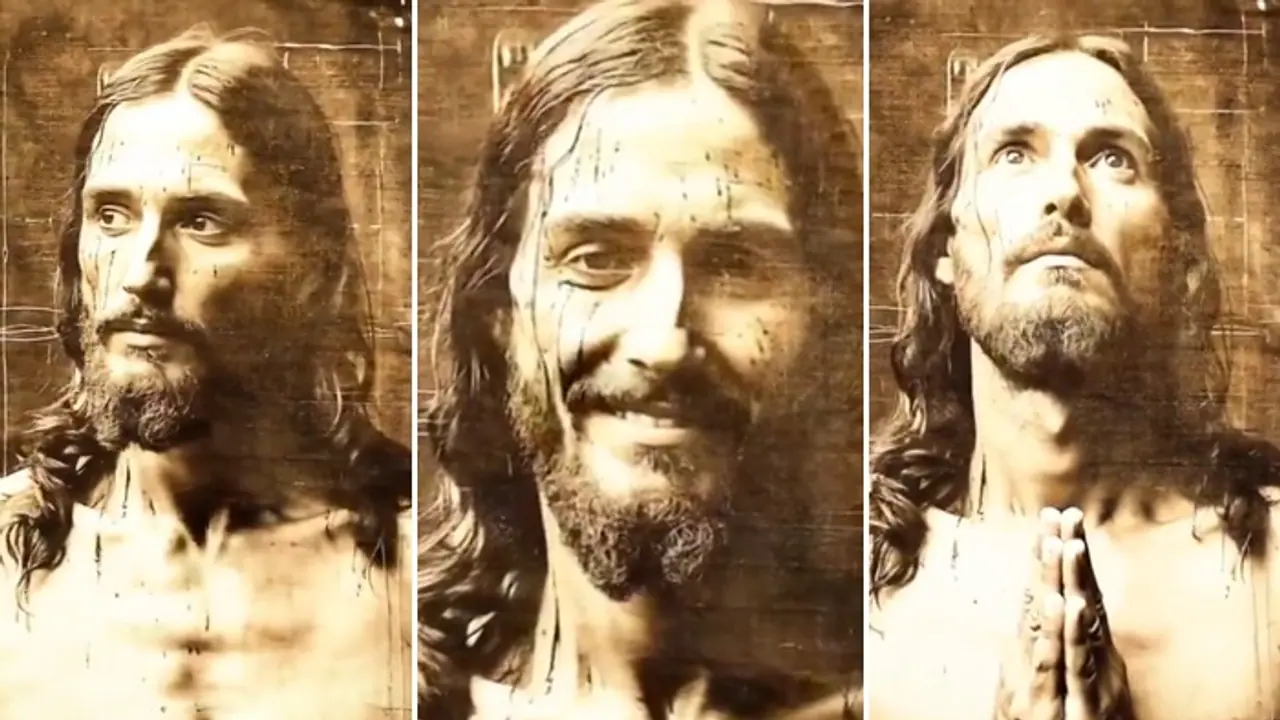An AI-generated video based on the Shroud of Turin attempts to reveal what Jesus Christ may have looked like, sparking debate over historical accuracy.
An AI-generated video, based on a famous religious relic, offers a visual interpretation of what Jesus might have looked like. Using images of the Shroud of Turin—an ancient cloth believed by many Christians to have wrapped the body of Jesus after his crucifixion—creators used the AI tool Midjourney to produce a realistic depiction of Christ. The result was a lifelike image and animation of Jesus blinking, smiling, and praying, reflecting what he may have appeared like prior to his crucifixion around 33 AD.

The video was shared on X (formerly Twitter), where some viewers hailed it as "the true face of Jesus." However, others criticized the portrayal for depicting Jesus with white European features, arguing it doesn't align with the historical context of his Middle Eastern heritage and likely darker skin tone.
One user jokingly remarked, "That can’t be right—he looks just like me, and I’m Norwegian."
Dr. Meredith Warren, a senior lecturer in Biblical and Religious Studies at the University of Sheffield, previously told DailyMail.com that although Jesus is commonly depicted as Caucasian, he likely had "brown skin, brown eyes, like the local population" of his time and region.
Also Read: Google rolls out Gemini Live for Pixel and Samsung Galaxy phones: 5 cool features you can try
According to Dr. Warren, the most accurate representations of Jesus’ appearance might come from Egyptian mummy portraits—realistic paintings created between 80 and 120 AD of individuals who lived in regions geographically and culturally close to where Jesus lived.
A recently created AI video attempts to visualize Jesus using the Shroud of Turin, a centuries-old cloth believed by many Christians to have wrapped his body after the crucifixion. By feeding photos of the shroud into Midjourney, an AI image generator, creators produced a lifelike image and animation of Christ blinking, smiling, and praying—capturing what he might have looked like before his death around 33 AD.
Experts believe that Jesus likely had features typical of the people living in ancient regions such as Egypt, Palestine, and Israel. These include dark eyes, brown skin, short curly hair, and beards—traits commonly seen in the Egyptian mummy portraits from the first century AD, which are considered more accurate representations of his likely appearance.
In a similar effort, medical artist Richard Neave used forensic reconstruction techniques in 2015 to create a portrait of a Judean man based on the study of Semite skulls. The result depicted a man with a wide face, dark eyes, a thick beard, short curly hair, and a tanned complexion—features consistent with Jewish populations from the Galilee region during Jesus' time.
Recently, artificial intelligence has been used to recreate what Jesus may have looked like by analyzing the Shroud of Turin, a centuries-old linen cloth that many Christians believe wrapped Jesus’ body after the crucifixion. The image on the shroud shows a gaunt man with long dark hair, a beard, and visible wounds on his face and body.
Curiously, the AI-generated version bears a strong resemblance to traditional artistic portrayals of Christ found in classical Christian art.
